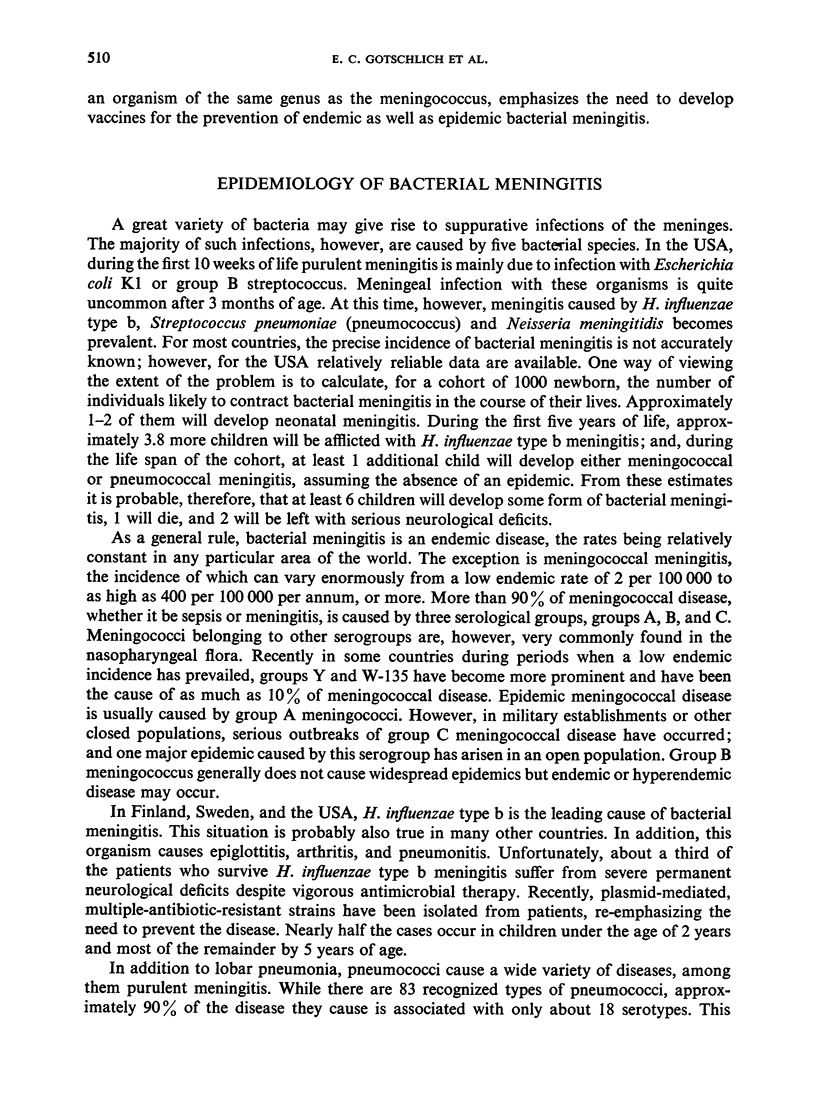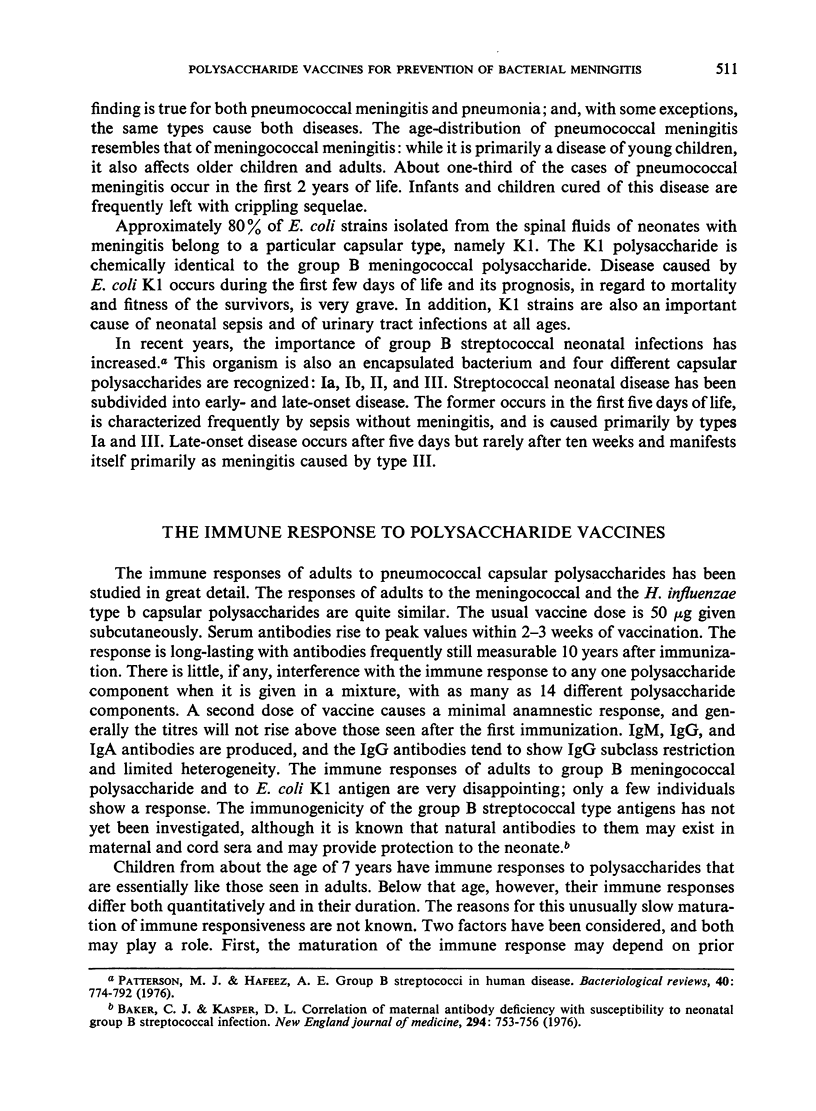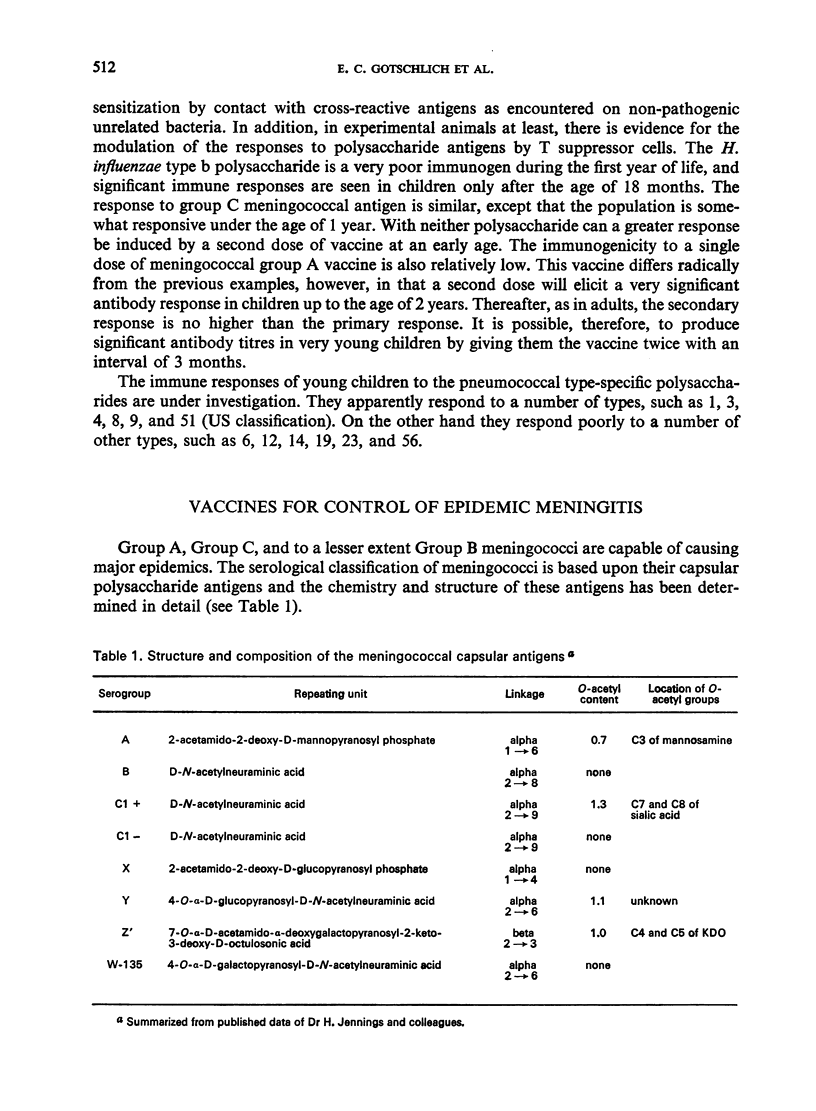Abstract
Most suppurative infections of the meninges are caused by five bacterial species: Escherichia coli, Haemophilus influenzae type b, Streptococcus pneumoniae, Neisseria meningitidis, and group B streptococcus. The immune response of adults to pneumococcal capsular polysaccharides has been studied in great detail and their responses to meningococcal and H. influenzae type b capsular polysaccharides are quite similar. Immune responses of adults to E. coli and group B streptococcal antigens are disappointing. The responses of children below the age of 7 years differ both quantitatively and in duration. Early experience shows that useful antibody titres can be achieved with certain antigens but further studies are required. In order to prevent bacterial meningitis by immunization, three vaccine formulations will need to be developed. When epidemic meningococcal disease occurs in a population, the vaccine containing only components of the meningococcus would be applied to a large segment of the population to terminate the epidemic. The second vaccine would contain components of H. influenzae type b, pneumococcus, and the meningococcus and would be administered in the first year of life, and repeated at suitable intervals to maintain life-long immunity. The third vaccine, designed to prevent neonatal meningitis caused by E. coli K1 and group B streptococci, would be administered to women preferably during the third trimester of pregnancy, so that their offspring would inherit sufficient antibodies to protect them during the first 3 months of life.
The vaccine against the meningococcus is a reality and has been used extensively during major epidemics, with excellent results. The two vaccines for control of endemic bacterial meningitides do not exist as yet, but the prospects are good.
Full text
PDF








Selected References
These references are in PubMed. This may not be the complete list of references from this article.
- Baker C. J., Kasper D. L. Correlation of maternal antibody deficiency with susceptibility to neonatal group B streptococcal infection. N Engl J Med. 1976 Apr 1;294(14):753–756. doi: 10.1056/NEJM197604012941404. [DOI] [PubMed] [Google Scholar]
- Baker C. J., Kasper D. L. Correlation of maternal antibody deficiency with susceptibility to neonatal group B streptococcal infection. N Engl J Med. 1976 Apr 1;294(14):753–756. doi: 10.1056/NEJM197604012941404. [DOI] [PubMed] [Google Scholar]
- Patterson M. J., El Batool Hafeez A. Group B streptococci in human disease. Bacteriol Rev. 1976 Sep;40(3):774–792. doi: 10.1128/br.40.3.774-792.1976. [DOI] [PMC free article] [PubMed] [Google Scholar]
- Peltola H., Mäkelä H., Käyhty H., Jousimies H., Herva E., Hällström K., Sivonen A., Renkonen O. V., Pettay O., Karanko V. Clinical efficacy of meningococcus group A capsular polysaccharide vaccine in children three months to five years of age. N Engl J Med. 1977 Sep 29;297(13):686–691. doi: 10.1056/NEJM197709292971302. [DOI] [PubMed] [Google Scholar]


